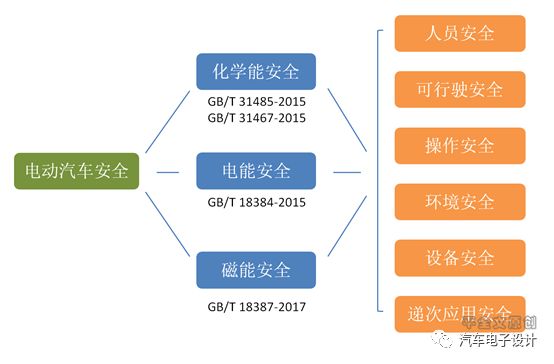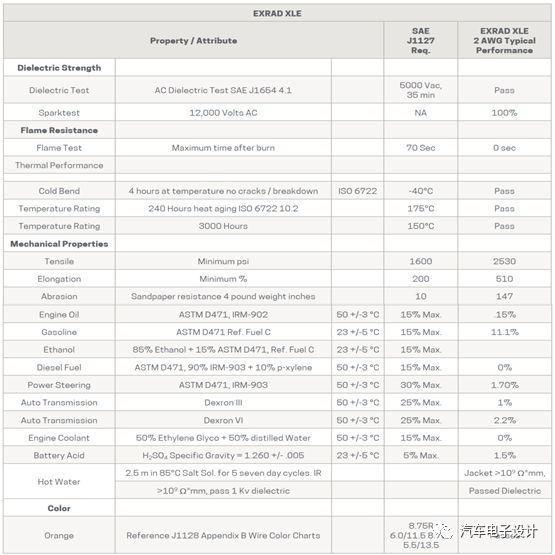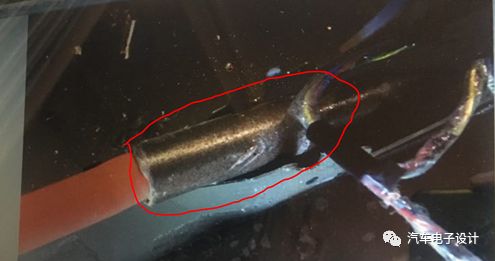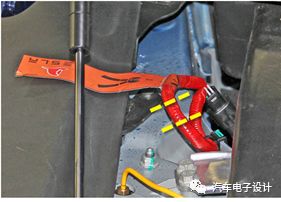Foreword
The energy form of electric vehicles is different from that of fuel vehicles, mainly including and newly added chemical energy, high-voltage electric energy, magnetic energy and mutual transformation. Various forms of energy, from the day the electric vehicle was born, have been tied with “safetyâ€. Chemical energy is flammable and easily polluted; magnetic energy may cause potential harm to the human body, and interfere with the environment and equipment; especially, high voltage and high current of electric energy directly pose a security threat to the human body or equipment. This article from the design point of view, using high-voltage cables as a case, focuses on the development of high voltage safety. Its purpose, human-centered security, is the most fundamental requirement.

Electric vehicles and power systems, this "high pressure" is not "high pressure" and has a strong harm to the human body.
1. High-voltage division of lines and equipment in the power system
An AC voltage level of 1 kV or less and a nominal voltage is defined as a low voltage, and an AC voltage level of 1 kV or more and 330 kV or less is defined as a high voltage. In the new edition of the “Working Regulations on Electrical Safetyâ€, it is stipulated that the voltage level below 1000V is low voltage equipment. Voltage levels above 1000V are high voltage equipment.
2. High voltage of electric vehicle, that is, class B voltage
Class A voltage: The maximum operating voltage is less than or equal to 30Va.c.(rms), or equal to 60V dc voltage components or circuits.
Class B voltage: A power component or circuit that has a maximum operating voltage greater than 30Va.c.(rms) and less than or equal to 1000Vac(rms), or greater than 60VDC and less than or equal to 1500Vdc.
3. High pressure is harmful to the human body, and current greater than 50mA is dangerous to humans
The forms of electrical energy that cause harm to the human body include electric shocks and electric burns. In the "personnel" safety of electric vehicles, both of these conditions may occur. For drivers and occupants, the composition of electrical injuries is greater. For maintenance personnel and fault handlers, both of these conditions may occur.
Electric shock is mainly caused by the current through the human body, damage to human organs, such as the heart, lungs, nervous system, and the voltage and current size, current through the human body time, body impedance state, environmental humidity state, AC frequency and other factors. At the same time, it is also related to the passage of current through the human body (between hand and hand, and between the left hand and the left hand). Through experiments, people generally agree that when the human body flows through a power frequency (50 to 60 Hz) 1 mA or a DC 5 mA current, the human body will feel tingling, stabbing, and pain. When the human body flows through a power frequency of 20 to 50 mA or a current of 80 mA, people will have paralysis, cramps, tingling, high blood pressure, and difficulty in breathing. When the human body passes a current of more than 100 mA, people will have trouble breathing and the heart will stop. In general, when the power frequency current below 10mA and the DC current below 50mA flow through the human body, people can get rid of the power supply, so the risk is not too great.
Electric burns are mainly caused by the thermal effects of electric currents and chemical effects. For electric vehicles, high-voltage power is mainly caused by thermal damage, such as short-circuit arcs, over-current heat, and other heat damage to human body surfaces.
For electric cars and power systems, high-voltage and high-current harm to the human body is the same.
The development of high-pressure safety begins with the progress of standards
The restraint in the standard is the bottom line and direction of development for electric vehicle safety. In our country, the standard is equivalent in some sense to the effectiveness of regulations. In recent years, the newly revised national standard has met or exceeded the standards of ISO and SAE in certain terms or parameters.
2015 version of the progress of electric vehicle safety standards:
| standard | Key point description | |
| new standard | GB/T 18384.1-2015 Safety requirements for electric vehicles Part 1: Vehicle-mounted rechargeable energy storage systems | a) Define the safety definition from the vehicle level: a new definition of “on-board rechargeable energy storage system†b) The concept of high voltage is clearer: the definition of "maximum operating voltage" and "class B voltage (high voltage) definition" is defined; c) Preventing gas damage: increase the protection of “gas to the cockpit, crew compartment, cargo spaceâ€; d) to prevent the high-voltage electrical damage requirements more specific: to improve and detailed insulation resistance requirements and calculation methods; e) Overcurrent or short circuit occurs and the protection of personnel is enhanced: The high pressure is cut off from the perspective of vehicle safety; f) Protector: Increase the damage to humans due to single point of failure. |
| Old standard | GB/T 18384.1-2001 Safety requirements for electric vehicles Part 1: On-board energy storage devices |
| new standard | GB/T 18384.2-2015 Safety requirements for electric vehicles Part 2: Operational safety and fault protection | a) Clear high voltage system: Applicable voltage range: Class B voltage (Class B voltage is higher than the original standard) b) Clear high-voltage cut-off process: "only one action required" from driving to cutting c) Clear on/off control by relay (main switch): Turn on/off the "necessary part" d) Increased manufacturer's requirements for emergency response: Provide processing guidelines or manuals. (Only listed changes in the relevant high voltage part) |
| Old standard | GB/T 18384.1-2001 Safety requirements for electric vehicles Part 2: Functional safety and fault protection | |
| new standard | GB/T 18384.1-2015 Safety requirements for electric vehicles Part 3: Protection against electric shock | a) Clearer definition of the vehicle's high and low voltage: Class A voltage (low voltage), Class B voltage (high voltage) b) Increased visual recognition of high pressure: Increased marking of Class B voltage wires and high voltage warning markings; c) increase single point of failure protection: insulation resistance, capacitive coupling, power failure; d) Explicit experimental method: Three test states for voltage class B (7.2) e) Modified withstand voltage test method f) Increased power cut requirements. |
| Old standard | GB/T 18384.1-2001 Safety requirements for electric vehicles Part 3: Personnel protection against electric shock |
analysis:
1. A total of 22 new three national standards have been added and 31 have been revised. Among them, personnel were protected by electric shock with the most changes, 10 were increased, and 11 were revised. It can be stated that, in the safety standard for electric vehicles, the idea of ​​human-centered product safety has risen to a new level.
2. The revised characteristics of the new national standard: the definition of high pressure is more clear and clear; the requirement for emergency response to failure has been increased, and companies are required to provide corresponding technical documents, etc.; emphasis is placed on the safety status of the vehicle while driving.
High voltage safety design case: high voltage cable
1. Case: Where is the “special†feature of the champlain cable used by tesla?
Tesla uses a cable specially made for electric vehicles in Champlain, USA. It can withstand voltages up to 600V and can operate between -70 and 150°C.
EXRAD XLE Cable Characteristics:


Comparison of Tesla high voltage cable characteristics with QC/T key specifications:
| Executive standard | TESLA (Execution SAE J1654, etc.) | QC/T 1037-2016 "High-voltage cables for road vehicles" |
| Insulation color | Orange | Orange |
| Voltage type | high pressure | high pressure |
| Insulation (media) pressure resistance | 5000Vac, 35min | Spark test, no breakdown discharge should occur AC 600 V/DC 900 V cable is 8 kV; 10 kV AC 1000 V/DC 1500 V cable |
| Temperature requirements | -70~150°C | A total of 8 temperature levels, the highest H level: -40 °C ~ 250 °C |
| Wear-resistant | Sandpaper resistance 4 pound weight inches ,10 | The minimum number of reciprocations 1000-1500 times |
| Chemical resistance | Hot salt solution, coolant, Battery acid | Chemical resistance impregnation time 10 seconds, strong corrosion, such as gasoline, diesel oil, heat aging after a single impregnation 240h, weak corrosive liquid such as coolant, glass water, heat aging 3000h. |
| Flame retardant properties | Maximum time after burn 70S | Self-extinguishing time requirements less than 30 seconds. Than GB/T 25085 GB/T 25087 self-extinguishing time requirements less than 70 seconds increase. |
Note: The Ministry of Industry and Information Technology approved the release of the automotive industry standard QC/T 1037-2016 "High-voltage cables for road vehicles", which will be implemented on September 1, 2016.
Analysis: QC/T tests or needs more than tesla's existing metrics for certain security features
Insulation pressure test, QC spark test, more severe.
In terms of low temperature rating, tesla is even better.
The flame retardant properties of QC are significantly higher than tesla requirements.
Wear characteristics, QC is higher than tesla characteristics.
For chemical solvents, QC covers more varieties. The Tesla HOT water (85°C) test for variability requires further analysis.
2. High-voltage cables need different protective measures due to their different locations
This is what the standard says, adding one or more layers of insulation, shielding, and housing to the basic protection. High-voltage cable protection in the specific location of the vehicle also needs to be designed. However, not all single high pressure protection. We have done very well in the design of low-voltage harnesses for fuel vehicles. For example, in the fore cabin, we all know that there are high temperature and vibration tests on the engine, and the wiring harnesses increase the temperature (150°C) and wear-resistant sheaths.
The following figure shows the tesla protection case:

Case summary, the high-voltage cable from the perspective of the vehicle, is also one of the high-pressure parts. More conditions are exposed. The security issue is more prominent. Therefore, in order to increase people's sensory identification, the prominent orange color is also used as a safe color. At the same time, it is necessary to meet the environmental requirements of different locations in the vehicle and vehicle. Including, temperature, corrosion resistance, wear and other aspects. It is also the ultimate risk of high pressure to prevent breakage.
In the standard, the newly added "power down" protection measures are understood
Personally think that in the standard, the “power-off†requirement for high-voltage safety protection measures has been added, which is very scientific and intelligent. From the surface principle to see, in fact, is a very complex requirement. It is not an easy task to be able to achieve correct, timely, safe and emergency power-off. Power failure, not all the reliability of the hardware relay implementation, more importantly, the software's logic is correct, fault diagnosis in place, etc.
The "off" is correct: It mainly starts with the transmission of software instructions, and adopts protective measures on communication methods, strategy design, and EMC.
Timely "break": It is a fast-response demand. The standard requires only one action from the "running mode" to the power-off state of the drive system. On the one hand, it is possible to adjust the vehicle level strongly and issue one step of the power-off command. On the other hand, the relay can cut off the power within a few seconds or less. Do it in time.
"Off" safety: It can be seen from the standard that, within a set period of time, the loop state satisfies one of the conditions "the AC circuit voltage should be reduced to 30Va.c, and the DC circuit voltage should be reduced to 60Vd.c or below; The total energy stored in the circuit is less than 0.2 J." Cut off the power supply again. The main body is to ensure that the relay is not powered off. Secure the hardware. Eventually it plays a protective role in the failure state.
Emergency (rescue) power-off: Actually, it is a destructive, non-recoverable power-off action that is taken when a high voltage is not available through the above state. The following picture shows tesla’s emergency response protection measures:

The emergency response program in the trunk cuts off the circuit: it consists of 2 low voltage wires. Cutting off this circuit will shut off the high voltage system outside the high voltage battery. And it needs to be cut twice to avoid the risk of accidental reconnection.
High-voltage circuit other safety measures
In the design of high-voltage loop safety, there are mainly hardware functions, such as insulation detection, HVIL interlock circuit, and safety connection; software has fault diagnosis, alarm, and redundant design; structural protection is sheathed, guarded, and so on.
summary
Electric vehicle safety and high voltage safety are the most prominent and concerned features. Whenever an accident occurs in a new energy vehicle, what people unconsciously care about is the form in which the person is injured, and electric injury? burn? The event itself is a challenge and pressure for designers. Therefore, in terms of protection of personnel, there is a greater need for continuous technological progress. At the same time, establishing a human-oriented security design is the core design concept.
Floor Standing Digital Signage
Floor Standing Digital Signage,Touch Digital Signage,Lcd Signage Indoor,Digital Signage Menu
Guangdong Elieken Electronic Technology Co.,Ltd. , https://www.elieken.com